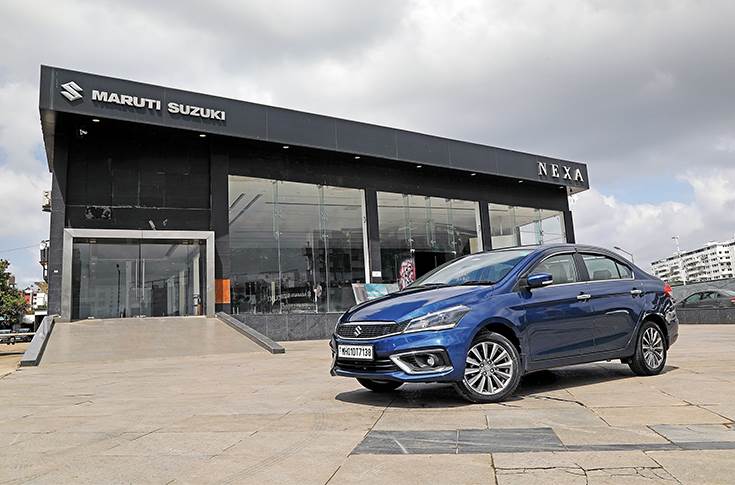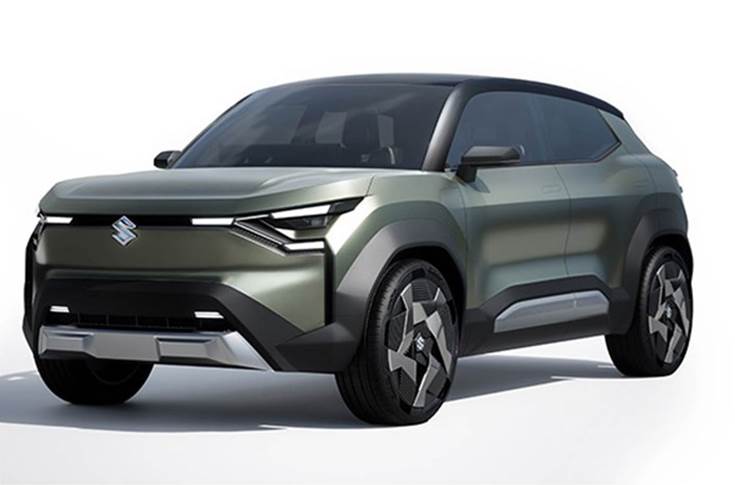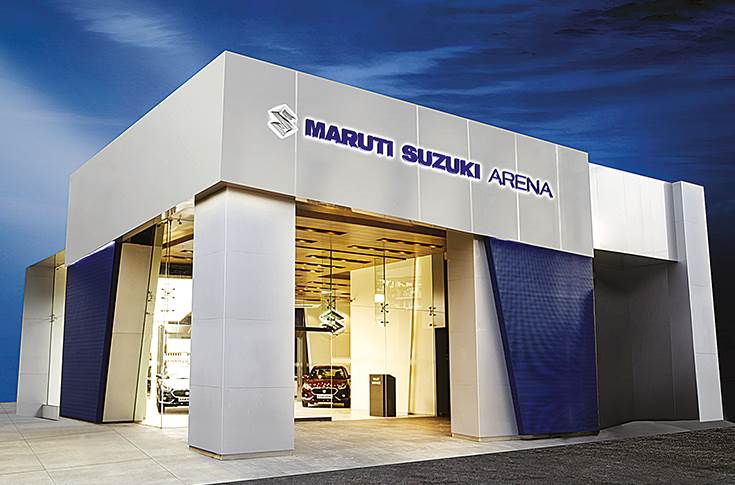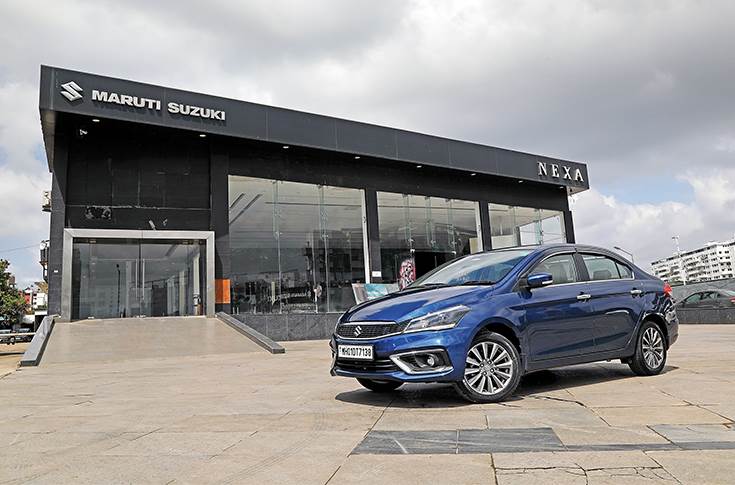The country’s largest car maker will not give up on small cars and it will continue to fill gaps in its SUV portfolio to get back to its 50 percent market share, said Hisashi Takeuchi, MD and CEO of Maruti Suzuki India. With an ambitious plan of adding 11 new products to its portfolio by the end of this decade under the Vision Maruti Suzuki 3.0, he wants to have a model in every segment for both Arena and Nexa retail channels to cater to evolving customer needs, Takeuchi said in an exclusive interview with Autocar India. He spoke about the growth story so far, and how the company intends to sustain the momentum going ahead.
What is your view on the year gone by?
We are very happy with our results in the first half of the year. Key factors like commodity prices and semiconductor supplies have supported us. These are all good tailwinds, which will push up our results. It has been a very satisfactory first half for us, as we have sold more than we had planned so far.
The swelling order book gives us comfort that we have future orders in our hands. But to keep the customer waiting for a long time makes them unhappy, so we have tried to address the situation.
Semiconductor challenges have affected you over the last few years. How did you address them?
The general situation around semiconductor supplies is getting better. But we have suffered a lot with semiconductor shortages and we took several measures to overcome the situation.
In the past, we spoke to semiconductor suppliers through our Tier I suppliers. So we have now developed a direct communication with them in order to ensure we understand each other’s challenges better and address them.
A direct connection is helping us a lot and probably, it is helping their side also, to be better prepared for our demand. So that is one aspect that is helping us to improve our situation. At the same time, we are working very hard with our R&D team to see how we can reduce the number of semiconductors used in one car. The innovative solution from them is giving us an extra opportunity to produce more cars.
You have a dual channel strategy, Nexa has done very well recently, but how do you take Arena to the next level?
We are a customer centric company and our core value is to always satisfy and make our customers happy. If a customer demands something, then it is our duty and responsibility to develop and supply the products that the customer wants.

There are some gaps in our portfolio, products that are missing in certain segments. We would like both our marketing channels — Arena and Nexa to fill those gaps and supply cars to our customers. We would like to have products in every segment in both our channels.
Don’t you think that Arena and Nexa will cannibalise each other?
We cannot avoid cannibalisation. But rather than letting the other brands take market share, it is better that we fill those gaps in both the channels, even with some cannibalisation.
Maruti Suzuki has announced its biggest expansion plan with the new Vision 3.0. What role will India play for Suzuki?
Our plan is to increase capacity from two million to four million units, this is what we call Maruti 3.0. To achieve that, we will have to review all our systems and processes across all areas. The products will increase and the majority of them will be for the domestic market. But it is our responsibility also to maximise the export opportunities to contribute to the country. And our export plan is also aggressive.
Last financial year, Maruti Suzuki exported 2.59 lakh units and this will go up to 7.5 lakh units by 2030. This is an increase of almost three times.
In order to do that, we have to introduce more models for the export market. We have to explore more destinations for export. We have been having very good discussions with Suzuki Motor Company also, so that we can maximise the potential of our export.
Are electric vehicle exports part of the plan?
Of course, EV will play an important role in expanding our exports. The EVs produced in India will be exported to some market in the future.

Why have you decided to merge with Suzuki Motor Gujarat?
When Suzuki Motor Gujarat was established, Maruti Suzuki was facing numerous challenges, hence SMC stepped in to set up the factories. That ensured less distraction for Maruti Suzuki, and hence we were able to protect our profitability and remain healthy.
Suzuki Motor came with 150 Japanese supervisors and they were permanently stationed in Gujarat and they trained our employees. And today, all three lines are operational with two shifts. SMC’s job is now complete.
Hence, they are handing it over to Maruti Suzuki and the integration of operations will further streamline the process and help Maruti Suzuki react to dynamic market situations better.
Can you share your powertrain strategy for the future?
We have said that we will get into electric vehicles in full swing. We will produce EVs as much as possible. But all cars cannot be replaced by EVs in the near future. ICE will continue to remain a critical part of the portfolio but we would like to improve the Co2 levels from them.
As a leading automaker, we will always fulfill the regulatory requirement set by the government. CAFE is an important area of Co2 reduction. But we are not relying on one or two technologies; we will have multiple technologies, hybrid, EVs, CNG, CBG and Flex Fuel.
While electric vehicles are a very strong tool to reduce Co2, a lot of investment will be going into that technology. At the same time EVs are very expensive (from a consumer standpoint).
We feel hybrid is also a very good alternate technology that combines electric powertrain with the current ICE that can give us a significant improvement in Co2. It is an established technology and it will not cost too much on the R&D front and it is relatively easier for us to introduce.
We have offered strong hybrids in the marketplace and are watching the market reaction carefully. We would still like to increase the hybrid share. We would like to adjust our pricing through variants, so that gradually we can increase our share of hybrids. At present, our hybrid share is around 10-15 percent, we would like to further increase it to 25 percent by the end of 2030.
You had explored the development of smaller compact hybrid vehicles which invites lower GST, but it seems the project has not progressed?
We are still working on something new. We are working on some solution (a smaller hybrid), as we want more consumers to experience our technology.
We hope that the government will support our hybrid. Yet, we are not relying on just one technology, our strategy is to offer multiple powertrain strategies to ensure we meet the consumer requirements as well as government policies.
How do you revive the small car segment?
My goal is to give this joy of mobility to as many people as possible — especially the small cars. It is the ideal product for first-time car buyers. They can start enjoying mobility and (by extension) personal happiness. I won’t give up on small cars.
After meeting the current emission and safety regulations, it is not possible to reduce cost much further. So, we may have to look at other categories, (like quadricycles) which we don’t want to. Yet, we will continuously try to reduce the production cost as much as we can and with the purchasing power of the Indian customer growing every year, we think the small car segment will come back, to some extent, once again.
As part of the vision, is a portfolio expansion also on the anvil?
Our model portfolio will increase to 28 from 17, because we have to introduce EVs and these are totally new products. That’s why the product range will be stretched. We will also fill some gaps in the market where we did not supply models to that segment. So that’s why we have to increase the number of models for India.
The core value of Maruti Suzuki is to give the joy of mobility to as many people as possible. From that perspective, a small car is very important for our business. At the same time, the needs of the Indian customers are changing and many of them are opting for an SUV or an MPV, so the choice is getting wider.
We have Nexa and Arena channels, both have to have the models in each segment. Maybe not all of them, some segments intentionally we will not introduce. We still have some gaps which we will fill.
 The biggest brand for us is Arena. While Nexa is a channel, we are trying to make Nexa the second biggest (automotive retail) brand in the country.
The biggest brand for us is Arena. While Nexa is a channel, we are trying to make Nexa the second biggest (automotive retail) brand in the country.
What are the gaps in your portfolio that you would like to fill?
We don’t have enough SUVs. In a market, where 55 models are available, Maruti has only four. The trend is becoming bigger. At present the main SUV categories are four metre and 4.3 metres, but they will expand further (into sub-segments) — a little bit on the lower and upper ends. Sticking to our core values, we will offer more customers the joy of mobility. If a customer wants bigger SUVs, we will satisfy their needs.
If they want a three row vehicle, we will supply those cars to the Indian customers, holding on to entry cars. I think in the small car segment, some SUVs will come in the future. Our SUV play will become much wider.
What about investment in a new internal combustion engine, like the new Z series engine?
We are investing (in the new engine) because we need improvement in Co2 emission. I think from some point onwards, we won’t spend so much (on ICE). Whatever we spend (in future), I think we will spend on electric and hybrid powertrains, and alternate powertrains like flex fuels and ethanol. The Z series engine is the biggest (ICE investment) — right. I can’t say it will be the last engine. A big engine change may not happen soon because we have already invested in it.
This interview was first published in Autocar Professional’s December 15, 2023 issue.
